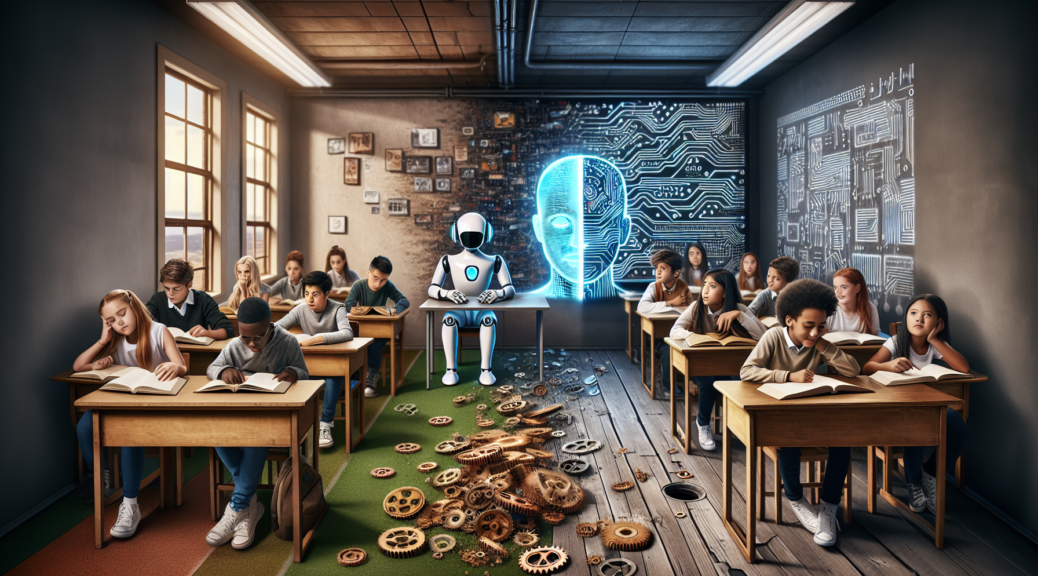
How Artificial Intelligence Reveals the Flaws in Our Education System
“`html
How Artificial Intelligence Reveals the Flaws in Our Education System
In recent years, artificial intelligence (AI) has emerged as a powerful tool in various sectors, including education. While some critics argue that AI is ruining education, a closer examination reveals that AI is not the culprit. Instead, AI is shedding light on the fundamental issues that have long existed within our education system. By exposing these deficits, AI presents an opportunity to address and reform these challenges, ultimately enhancing the learning experience for students worldwide.
The True Role of AI in Education
AI in education is often misunderstood. Rather than replacing teachers or diminishing the learning process, AI serves as a supplementary tool that can personalize and enhance educational experiences. AI technologies facilitate adaptive learning, enabling systems to adjust content and levels based on an individual student’s pace and understanding. This, in turn, highlights the traditional one-size-fits-all approach’s inadequacies.
Some potential benefits of AI in education include:
- Providing immediate feedback to students and educators
- Offering personalized learning paths
- Identifying struggling students sooner
- Breaking down complex subjects into manageable, learnable parts
Unearthing the Standardization Problem
The traditional education system operates on a model of standardization, assuming uniformity in student needs and learning abilities. However, AI exposes the inefficacy of this conventional model by demonstrating that each student has unique learning requirements. AI-driven tools like intelligent tutoring systems can cater to this need by offering personalized content and assessments, making the rigid standardization approach obsolete.
Critics argue that introducing AI into classrooms will further deepen educational disparities. In reality, if implemented correctly, AI can help bridge the gap by providing resources and support to students who may otherwise be underserved by conventional methods.
The Need for Teacher Enablement
AI’s role is not to replace educators but to empower them. However, the existing education framework often fails to support teachers in effectively integrating technology. To make the most of AI’s potential, teachers need proper training and resources for technology adoption. When educators are equipped to utilize AI efficiently, they can focus more on engaging students rather than merely imparting information.
Educational institutions should prioritize professional development programs for teachers to foster a tech-savvy teaching environment, enabling them to leverage AI in innovative ways.
Challenging Traditional Assessment Methods
The prevalence of standardized testing as a primary measure of academic success is another aspect of the education system under scrutiny. AI compels a re-evaluation of traditional assessment methods by offering alternative means of gauging student comprehension and progress. Technologies such as natural language processing and machine learning can assess creativity, critical thinking, and collaboration—skills essential for the 21st-century workforce.
This shift in assessment methods can potentially reduce student anxiety and pressure associated with high-stakes testing, promoting a healthier and more rounded learning environment.
Addressing Resource Allocation
AI’s integration in education has spotlighted significant discrepancies in resource allocation, including disparities in accessibility and funding. Schools in marginalized or underserved communities often lack the resources to adopt and implement advanced technologies. Thus, the gap between these institutions and their well-funded counterparts continues to widen.
To create a more equitable education system, policymakers must focus on ensuring all students have access to AI tools and technologies, regardless of their socio-economic background. Strategies could include:
- Increasing funding for technology in underserved areas
- Implementing policies for equitable access to digital tools
- Encouraging public-private partnerships to bolster educational resources
Towards a Reimagined Education System
Artificial intelligence is not an antagonist in the realm of education. Instead, it serves as a catalyst for much-needed introspection and change. By laying bare the deficiencies in our existing educational frameworks, AI encourages stakeholders—educators, administrators, and policymakers—to rethink and redesign a system that meets the diverse needs of today’s learners.
Ultimately, embracing the insights provided by AI can drive the transformation toward an education system that is inclusive, adaptive, and ready to prepare students for the challenges of tomorrow. With intentional efforts and strategic planning, AI can be a valuable asset in overcoming the systemic issues plaguing schools and becoming a stepping stone to a brighter, more educated future.
“`



